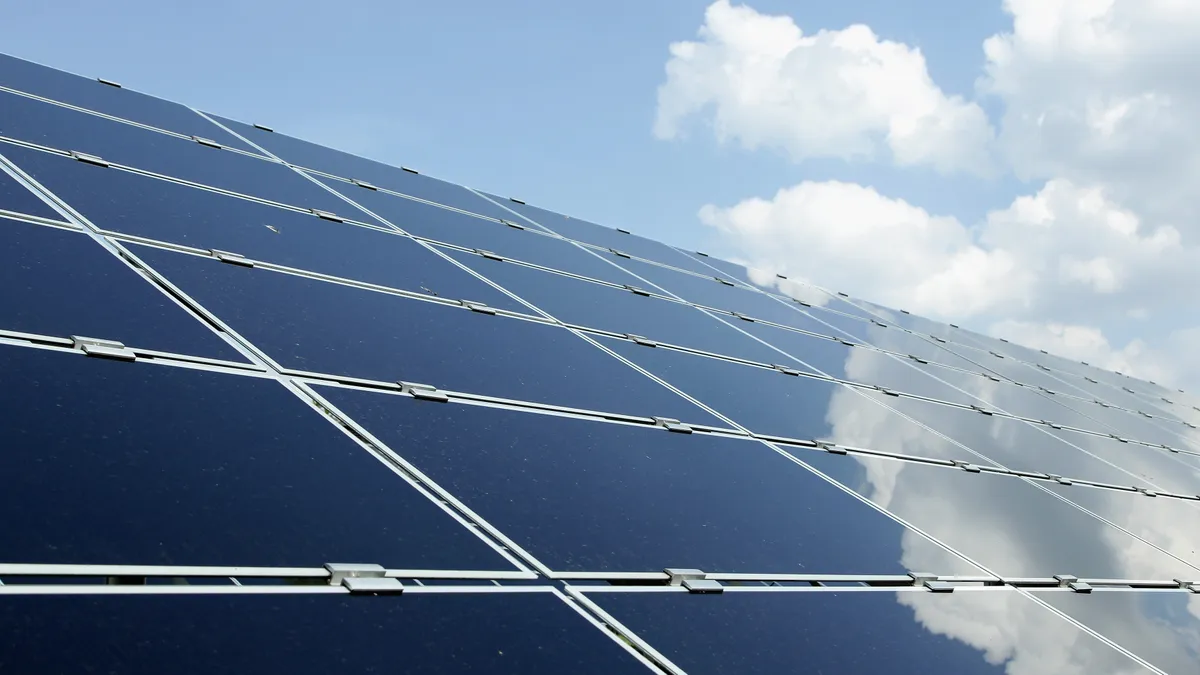Dive Brief:
-
While some types of project are more popular with investors than others, overall demand for renewable energy project financing continues to grow, potentially outstripping financiers' ability to keep up, according to participants in a Tuesday panel hosted by Wood Mackenzie.
-
Utility-scale and residential solar deals are popular with investors, but deals in "the middle" of the renewable energy industry — such as commercial and industrial projects and community solar — suffer from a lack of standardization, according to Marshal Salant, global head of alternative energy finance at Citi. However, Salant noted that this "middle" area also has the most room for growth.
-
Speakers emphasized the need for direct-pay tax credits, which they said are necessary to increase the number of developers who can access renewable energy finance and prevent a potential shortage of financing from blocking renewable energy deals.
Dive Insight:
There is no shortage of growth in demand for renewable energy, according to speakers during a panel on renewable finance at Wood Mackenzie's Power and Renewables Conference this week. But with fast-growing opportunities in emerging technologies like energy storage and underdeveloped industry sectors like community and commercial-scale solar, it's not clear whether the availability of financing will keep pace with demand.
A confluence of federal support, state policy and demand from corporations setting voluntary climate targets has created a "perfect demand signal in the market" that is driving the development of clean energy projects, according to Patrick Pfeiffer, managing director of Statkraft U.S., a renewable energy developer.
Investors, too, are seeking out renewable energy deals in growing numbers. Using environmental, social and governance standards as a means of evaluating investment opportunities "has taken off faster in the financial world than just about any phenomena we've seen," Salant said. "Four or five years ago, people couldn't spell ESG. Today, bankers come to me, corporates come to us, and on the investor side, [interest is] just massive."
There is room for even greater growth among projects that fall in-between the utility-scale and rooftop solar sectors — projects built for businesses and communities for example — according to Salant.
Moderator Xiaojing Sun, a senior research analyst at Wood Mackenzie who specializes in the global PV solar supply chain and technology development, also raised the question of when financing will become widely available for emerging technologies such as offshore wind, energy storage and hydrogen. But when — or whether — that happens will depend on the financial sector's ability to keep up with renewable demand, according to Christopher King, managing director and co-head of community solar for asset manager Lafayette Square.
There simply aren't enough people in financing available to evaluate all the potential renewable energy deals coming across their desks, according to Salant, who said demand from both investors and project developers also exceeds the amount of tax equity-based financing currently available to the market. Currently, he said, most financing goes to big developers with an established a track record of success and a network of contacts within finance. New developers or smaller firms increasingly fall by the wayside, even if they have a great project investors might be willing to support, Salant said.
He said the creation of direct-pay tax credits, which could open up more opportunities for less-established developers, is currently the most critical development on the table that could take place in renewable energy finance.
"If for some reason direct pay doesn't pass," Sun agreed, "there might be a tax equity shortage for the market."













